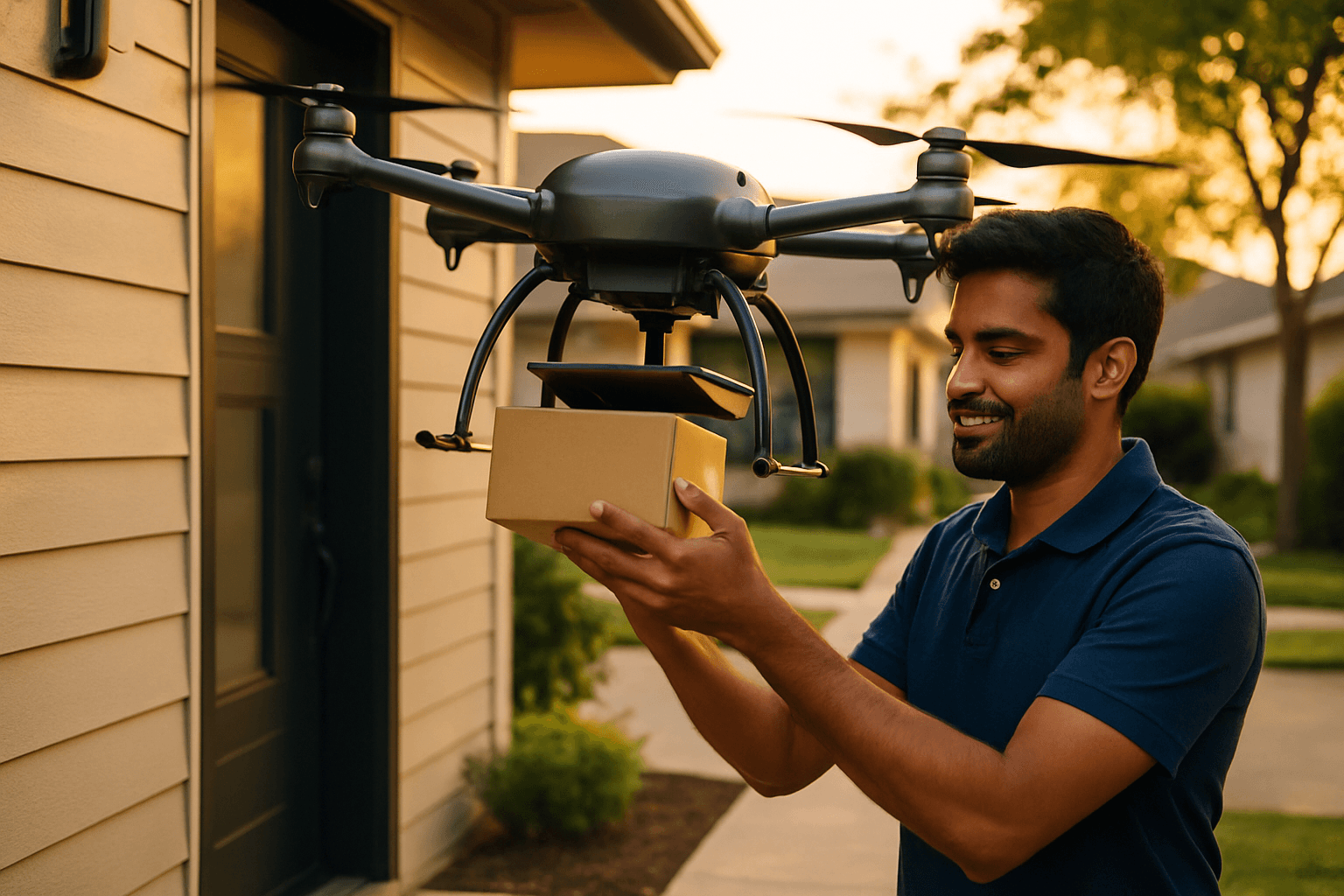Imagine a world where essential items arrive at your doorstep within minutes, bypassing traffic and traditional logistical hurdles. This vision is rapidly becoming a reality through drone delivery services, revolutionizing how goods are transported over the “last mile.” While not every item is destined for aerial transit, a specific set of characteristics makes certain goods perfectly suited for the speed, efficiency, and precision offered by Unmanned Aerial Vehicles (UAVs).
Key Characteristics of Ideal Drone-Deliverable Goods
The suitability of a product for drone delivery primarily hinges on its physical attributes and the urgency of its need. Drones are best suited for lightweight, small to medium-sized packages. Companies like Amazon typically deliver items weighing up to five pounds, encompassing a wide range of everyday essentials. Walmart, a major player in drone delivery, offers over 20,000 items through its service, with 85% of products in a typical Neighborhood Market meeting their 10-pound weight and volume requirements.
Beyond physical dimensions, the nature of the delivery itself plays a crucial role:
- Lightweight and Compact: The most significant limiting factor for drone delivery is payload capacity. Most current delivery drones can carry between 2 to 5 kilograms (approximately 4.4 to 11 pounds), with some systems designed for specific, slightly heavier loads. This restricts the size and weight of individual packages.
- Time-Sensitive and Urgent: Drones excel at rapid delivery, bypassing ground-based obstacles like traffic. This makes them ideal for items where speed is paramount.
- High Value-to-Weight Ratio (often, but not always): While not a strict requirement, items that are critical despite being small and light often find a perfect fit with drone delivery, as the speed and directness can justify the service.
- Non-Hazardous and Stable: Goods that are safe to transport by air and do not require complex handling or temperature control beyond what a typical insulated package can provide are preferred.
Categories of Goods Flourishing in Drone Delivery
Several categories of products are already proving highly successful in current drone delivery operations:
Medical Supplies and Pharmaceuticals
Perhaps the most impactful application of drone delivery is in healthcare logistics. The ability to quickly transport vital medical supplies can be life-saving, especially in remote, rural, or disaster-stricken areas where ground infrastructure may be lacking or compromised. Drones have been instrumental in delivering:
- Vaccines and Blood Products: Companies like Zipline have pioneered the delivery of millions of vaccines and critical blood supplies across the globe, significantly speeding up delivery times.
- Prescription Medications: Expedited delivery of prescriptions directly to patients’ homes is a growing use case, enhancing accessibility and convenience.
- Medical Equipment and Samples: Drones are used to move laboratory samples, COVID-19 test kits, and even emergency equipment like defibrillators, improving response times in critical situations.
Food and Beverage Items
The demand for on-demand food delivery makes it a natural fit for drones, promising faster and fresher service. Companies are actively delivering a variety of culinary delights:
- Prepared Meals: Fast food items, pizzas, tacos, and other prepared foods can be delivered quickly, ensuring they arrive hot and fresh.
- Groceries and Convenience Items: Everyday grocery essentials, snacks, and beverages are frequently delivered. Walmart, for instance, has seen top drone delivery orders include ice cream, lemons, rotisserie chicken, and Red Bull.
- Coffee and Pastries: Lighter, smaller food items are easily transported by drones, catering to quick breakfast or snack needs.
Small Retail and E-commerce Packages
For many consumers, drone delivery offers the ultimate convenience for online purchases of everyday necessities:
- Everyday Essentials: Batteries, toothbrushes, beauty products, and similar small household items are commonly delivered by drones.
- Small Electronics: Items like phone accessories or other compact electronic devices fit within drone payload limits.
- General Merchandise: A broad range of light goods that customers might typically pick up at a convenience store or pharmacy are suitable for drone transport.
Postal Mail and Documents
While less common in high-volume commercial services, drones can also efficiently transport light postal mail and important documents, particularly to remote locations or between facilities.
Factors Influencing Drone Delivery Suitability
Beyond the intrinsic properties of the goods themselves, several external factors determine the feasibility and efficiency of drone delivery:
Weight and Volume Constraints
As highlighted, payload capacity remains a primary limitation. Drones are fundamentally designed for lighter packages, making them less suitable for bulky or heavy items like furniture, large appliances, or substantial grocery orders. While drone technology is advancing to increase payload capacity, current systems heavily favor smaller, lighter goods.
Urgency and Time-Sensitivity
The ability of drones to avoid ground traffic and follow direct flight paths makes them exceptionally well-suited for urgent deliveries. This is a major advantage for medical emergencies or perishable goods where every minute counts.
Delivery Environment and Infrastructure
Drone delivery thrives in environments where direct flight paths are advantageous and ground access is challenging. This includes:
- Remote and Rural Areas: Drones can access locations difficult to reach by traditional vehicles, expanding delivery reach to underserved communities.
- Disaster Zones: In emergency situations, drones can deliver critical supplies to areas cut off by damaged infrastructure.
- Suburban Areas: Many current commercial drone operations focus on suburban environments, which offer a balance of population density and clear airspace.
However, dense urban environments pose challenges due to complex airspace regulations, privacy concerns, noise, and the difficulty of finding suitable landing zones.
Regulatory Landscape and Safety
Strict regulations regarding airspace, flight altitude, safety protocols, and privacy are critical considerations. The ability of drone operators to comply with these rules influences the scope and types of goods they can deliver. Advances in “Beyond Visual Line of Sight” (BVLOS) permissions, such as those granted to Amazon Prime Air, are crucial for scaling complex operations and expanding the range of deliveries.
Weather Dependency
Drones are susceptible to adverse weather conditions, including strong winds, heavy rain, snow, or fog, which can disrupt operations and pose safety risks. This weather dependency affects the reliability of drone delivery for all types of goods.
The Future of Drone Delivery
As drone technology continues to evolve, addressing current limitations such as battery life, payload capacity, and regulatory hurdles, the range of suitable goods is expected to expand. Innovations in drone design, autonomy, and air traffic management will further integrate UAVs into the broader logistics ecosystem. The current focus on lightweight, urgent, and accessible goods highlights the immediate benefits of this technology, paving the way for a more efficient and responsive delivery future.





